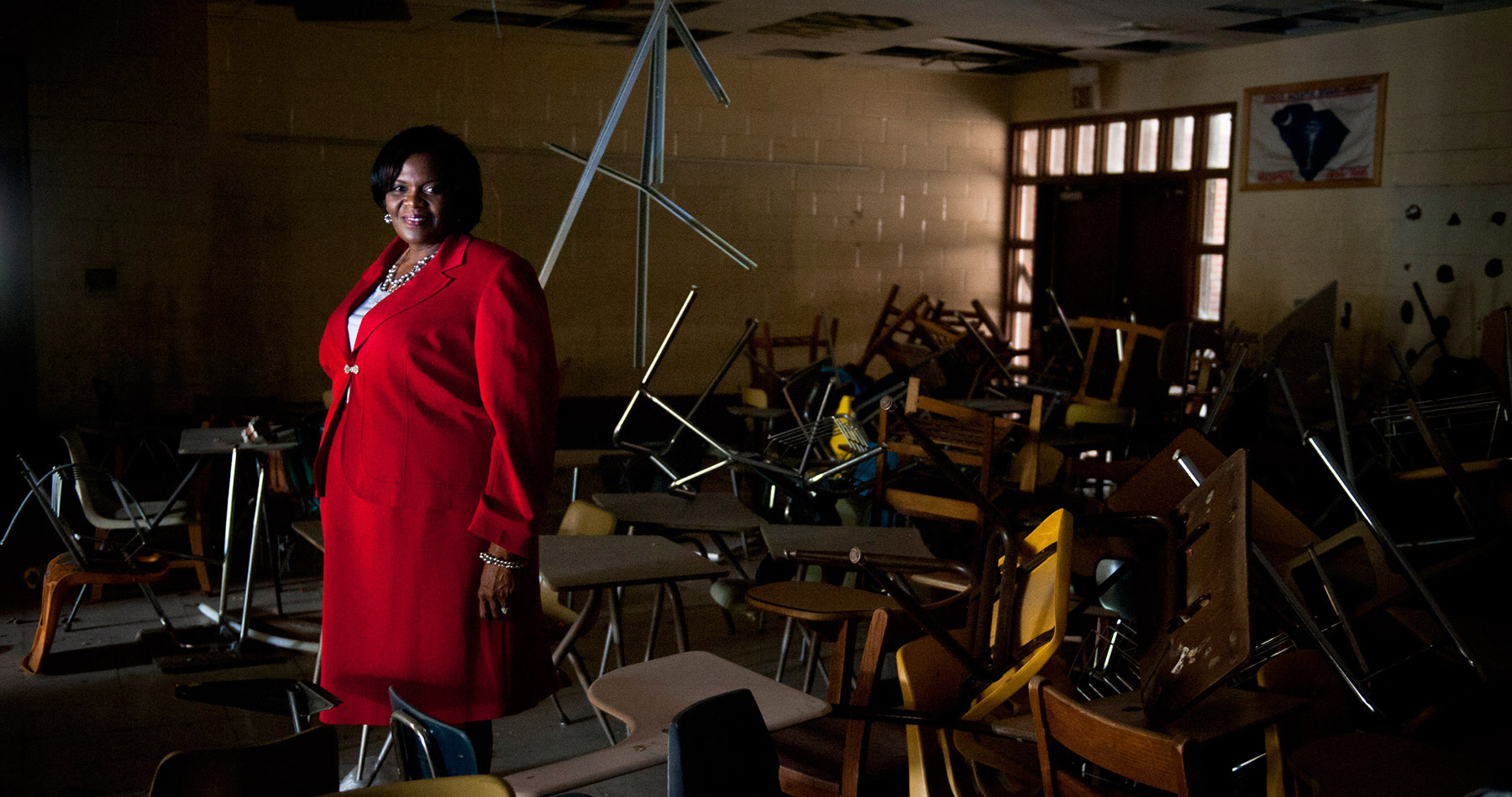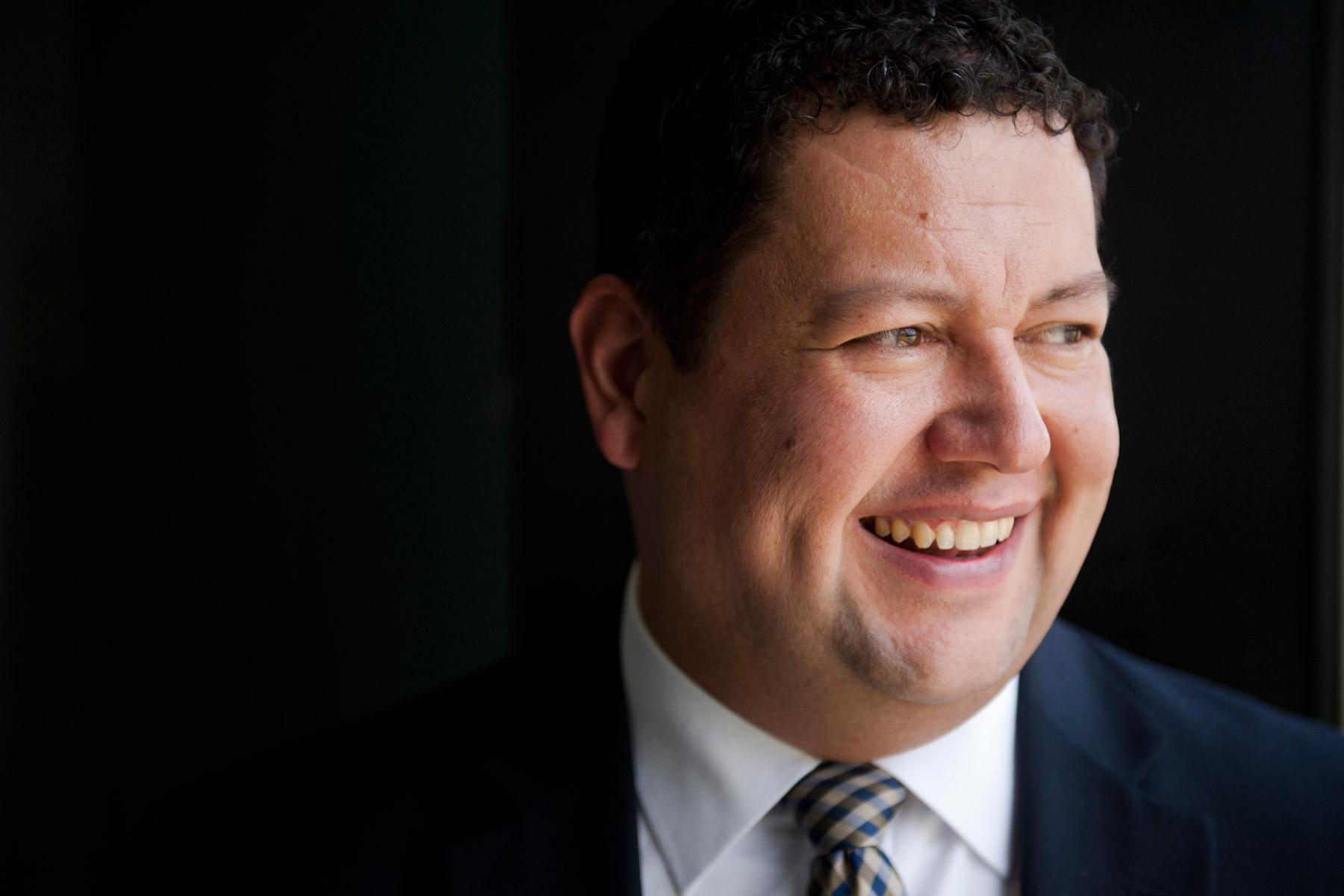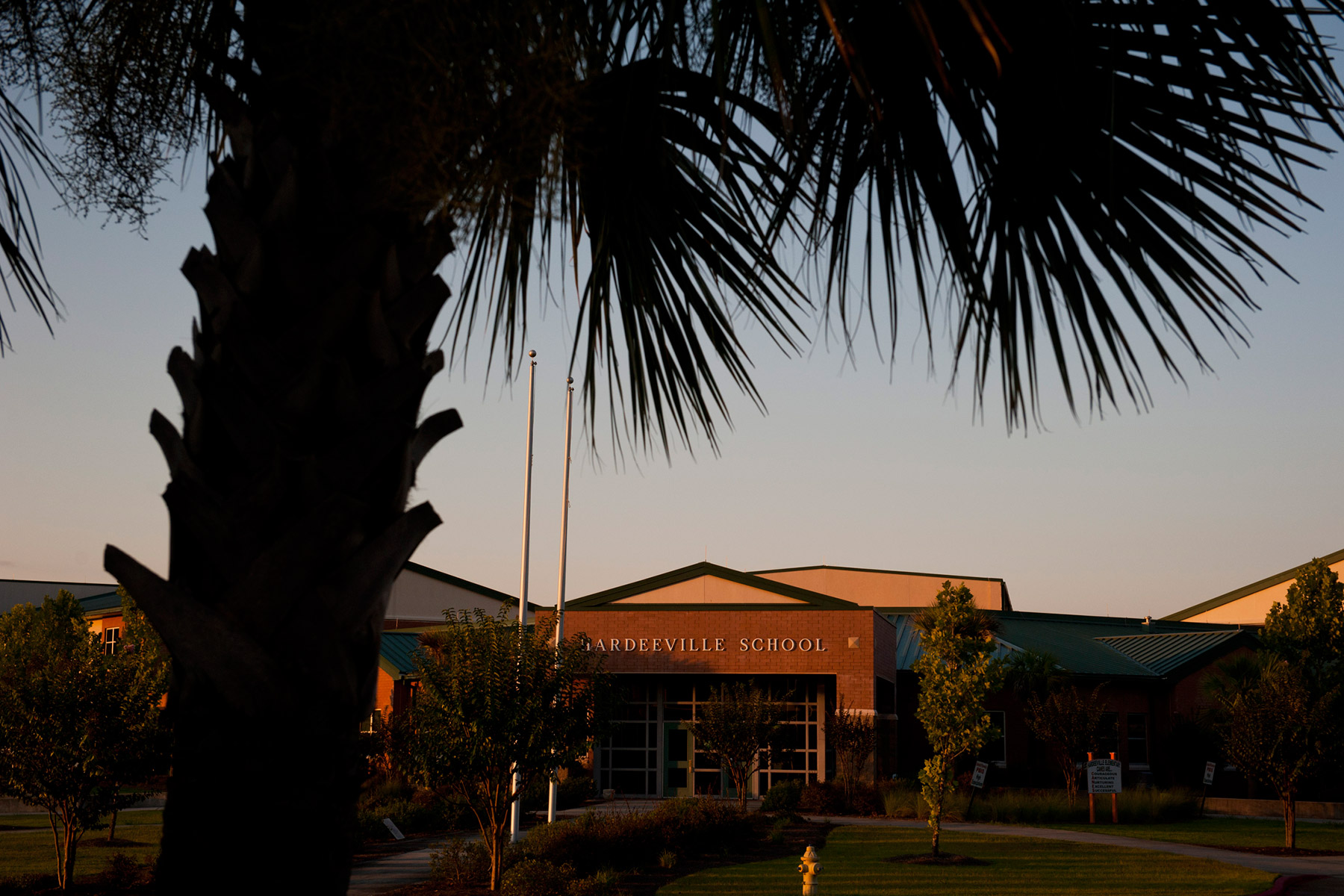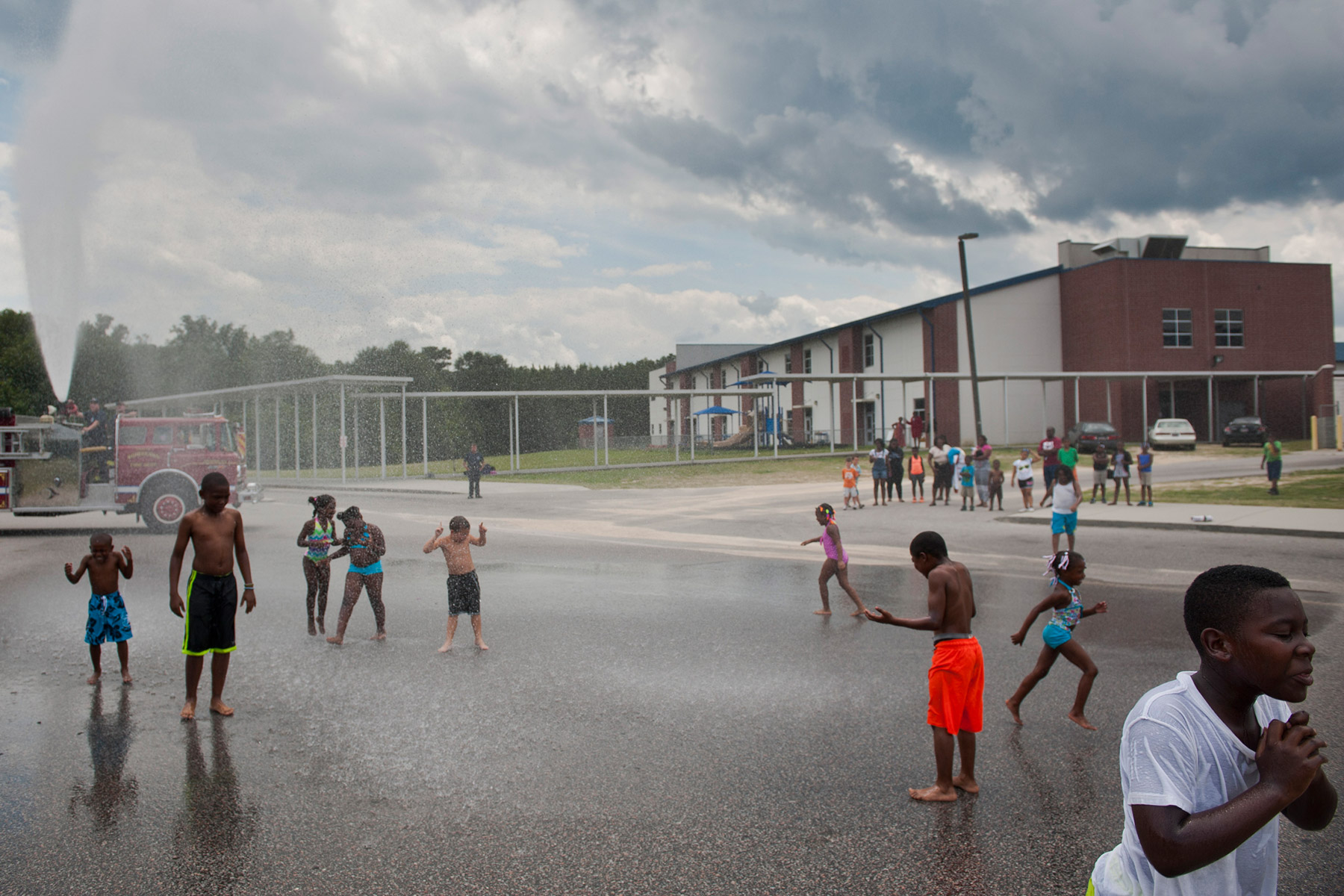
Class Action
CountiesinSouthCarolinatakeinsufficientschoolfundingintotheirownhands
Photos by Carolyn Van Houten for Al Jazeera America
Produced by Vaughn Wallace
Edited by Vaughn Wallace, Kate Kilpatrick, Christopher Taylor
Above: Jasper County Superintendent Vashti Washington stands for a portrait inside the old Ridgeland Middle School building. "Culturally it is difficult to get the community to change and to get a quality system in place," Washington said. "I have met so much opposition that it has dampened my spirit."
Published on Fri, August 15, 2014
JASPER COUNTY, S.C. – Raw sewage coming up through floor drains after heavy rains. Ceilings falling in. A venomous snake slithering into the school from a nearby swamp.
A decade ago, the conditions in Jasper County schools laid out in the 2005 documentary “Corridor of Shame” painted a dismal picture of public education in rural and impoverished South Carolina. The neglected schools in the state’s southernmost point epitomized the conditions faced by students from areas that lack a robust tax base to augment education spending. The film told the story of the 36 “Corridor of Shame” school districts that came together to sue the state for failing to provide “a minimally adequate education.”
More than 20 years later, the case is still pending in the State Supreme Court, with a decision likely to come down soon. In the meantime, some failing school districts in Jasper County have turned to volunteers and community involvement as a stopgap resource to help turn their failing schools around.
Inadequate state funding of Corridor schools has persisted for generations. In recent years, South Carolina has regularly underfunded education by about $700 million — about $1,000 per student — annually, according to the South Carolina Education Association.
But it wasn’t until several years ago, when the film was shown between services one Sunday at Hilton Head Presbyterian Church, that Jasper County found a nearby ally. Hilton Head is located in the state’s most affluent county, just 40 miles from Jasper County.
“People couldn’t believe what they were seeing, and that it was right next door,” said church member Blaine Lotz, who also serves as chairman of the Democratic Party in Beaufort County. “It touched their hearts.”
The church partnered with the Corridor school districts within reach.
“We didn’t want to just say we were going to be patronizing and shovel off things, and give money and so forth. That wasn’t what we were looking for,” Lotz said.
According to a group of five prominent state bishops representing Lutherans, Anglicans, Roman Catholics and United Methodists, churches and communities need to help lift beleaguered Corridor schools. “We believe there is a ‘Corridor of Shame’ in our state,” the bishops wrote in a May letter. “Crumbling buildings, inadequate funding, and low expectations mark too many districts at a time when a 21st century economy demands more of our people. How can the next generation rise to the challenge of this day and age when they are not given the superior education they deserve?”
Hilton Head Presbyterian’s volunteer efforts began at Ridgeland Elementary, one of the two new schools built in the county in 2007. The school had a nice library, but with very few books on the shelves. So the church launched a “Book and a Buck” drive, where members brought in books with money tucked inside to supplement materials the church would send. In just over a year, Lotz said, the church donated about 2,000 books to Ridgeland.
In addition, about 50 church volunteers travel nearly an hour each way to Ridgeland Elementary for regular tutoring sessions with fifth-graders. They work with students individually, focusing on reading skills, and send letters to them through a pen-pal program designed to improve writing skills.
According to Lotz, the students are making progress. The volunteers, however, understand they can do only so much. “Not only is it probably a stopgap, it’s focused on such a small area,” Lotz said. “How many areas as a congregation can we touch?”
Poverty’s impact on education extends well beyond the Corridor of Shame. According to the Children’s Defense Fund, access to quality education is dictated by geography and race for many children throughout the U.S., where one out of five kids is poor and one out of 10 is considered extremely poor. Almost 75 percent of lower-income fourth- and eighth-grade public school students, as well as 75 percent of black and Hispanic students in those same grades, can’t read or compute at grade level, the organization said in its 2014 The State of America’s Children report. About a third of black students in the U.S. do not graduate from high school in four years, it added.
Boosting graduation rates across the board is a top priority throughout the Corridor of Shame, where some towns are trying new strategies to bridge old divides. In Marion, S.C., where only three-fourths of the county’s students graduate on time, economic development officials have joined the county’s four mayors to form a coalition to support the schools. It’s one of several initiatives of Marion Mayor Bobby Davis, the city’s first black leader, who took office last spring.
Davis believes improving education is vital to Marion County, which leads the state’s unemployment at 10 percent. “Hopefully in the near future we’ll have a workforce that will attract additional industry into our county,” he said.
While most residents agree that education within the Corridor needs to improve, there’s little consensus on how best to do it.
That’s the case in Jasper County, where the two crumbling school facilities highlighted in the “Corridor of Shame” documentary — Ridgeland Elementary and West Hardeeville Elementary — were replaced in 2007. However, the community disagrees on how best to utilize the two new facilities, which were originally intended to serve the towns of Ridgeland and Hardeeville individually.
“I had the difficult decision of getting the [school] board’s approval to redesign the way the schools are set up so they will be beneficial to all groups,” said Vashti Washington, superintendent of the Jasper County School District.
Both the Hardeeville and Ridgeland schools were designed to house K-12 classes. Growth projections were off, however, which left middle and high school students in Ridgeland “squeezed inside the building,” she said. Teacher turnover was also a problem.
Ultimately the school district consolidated all the county’s middle school classes in Hardeeville and all the high school classes in Ridgeland.
Hardeeville parent Yolanda Gadson doesn’t support the consolidated school plan. “I would move over that issue,” she said. For starters, Hardeeville and Ridgeland are rivals. Then there’s the 15-mile trek between the two towns over a two-lane highway and through desolate swampland.
School performance is another issue.
“Have you ever seen the scores in Jasper?” said Gadson, who has a 6-year-old daughter. “I would send her to a better school that will challenge her to the fullest.”
Gadson’s criticism is not uncommon in an area fraught with intense political debate over operations of the county’s schools. In late June, the ACLU sued the school district for “malapportioned” voting districts they said need to be redrawn due to population growth in the last decade. The school board, however, contends that changes must come from the General Assembly.
Since the consolidation occurred two years ago, the school district has saved about $1 million by not replicating teaching positions, Washington said. Consolidation has also helped facilitate an increase in art education and Advanced Placement course offerings, she added.
Washington just wrapped up her fourth year as superintendent in Jasper County. She said de facto segregation remains another problem, as many white students attend private school or go to school outside the county.
She, too, has gone outside the county — for help.
For example, a United Way reading program has boosted reading levels for kindergartners and third-graders, she said. The United Way’s Early Grade Reading Program, going into its third year, deploys about 300 volunteers in Jasper County throughout the school year. Students meet with a tutor three times a week for up to two hours at a time. The goal, according to the organization’s Director of Education Impact Bethany Marcinkowski, is to get at least 80 percent of the students reading on grade level by the time they reach fourth grade.
Dismal test scores, however, indicate there’s much work to be done to get there.
The school district still has an “at-risk” rating for failing to meet standards for progress set out by the South Carolina Department of Education for the past five years. Over that same stretch, most of the district’s students failed to meet or exceed the state’s testing standards in reading, math, science, social studies and writing. The highest subject scoring during that time frame was in 2012, when 53 percent of district students met or exceeded state standards in writing. On the flip side, only 31 percent of district students met or exceeded standards in science last year.
In Jasper, infighting has triggered a federal investigation by FBI and IRS officials, as well as South Carolina’s Law Enforcement Division, into allegations that the school district has misappropriated funds.
Washington denies the charge.
“We haven’t hidden anything,” she said. “I will tell you that now I’m in the fight of my life for my job.”
Although her contract runs through 2017, she expects school board opposition to her initiatives will eventually leave her without a job.
For now, however, at least some of her initiatives endure, such as the volunteer efforts.
“It’s making a difference in one area for kids who are willing to be a part of it. That’s about all we can do,” Lotz said. “We can’t change the politics. We can’t change the culture. But we can make individual changes and make some of their lives and educational experiences better.” ◆









